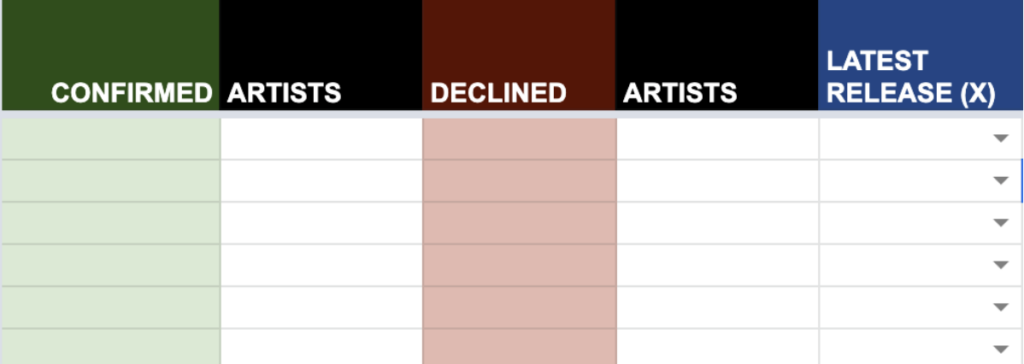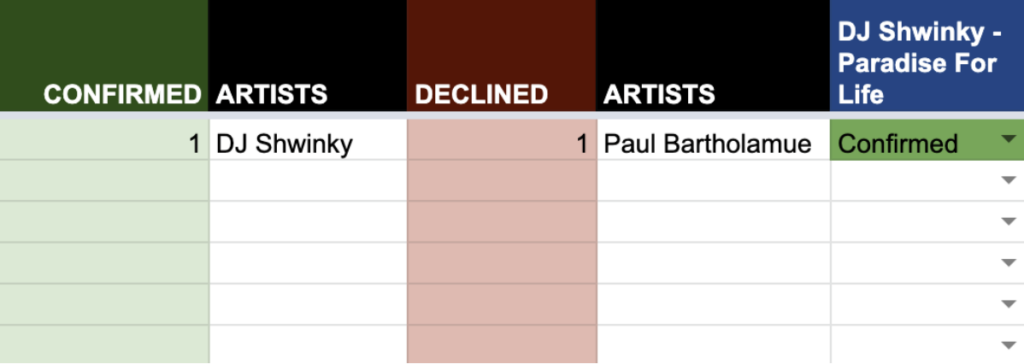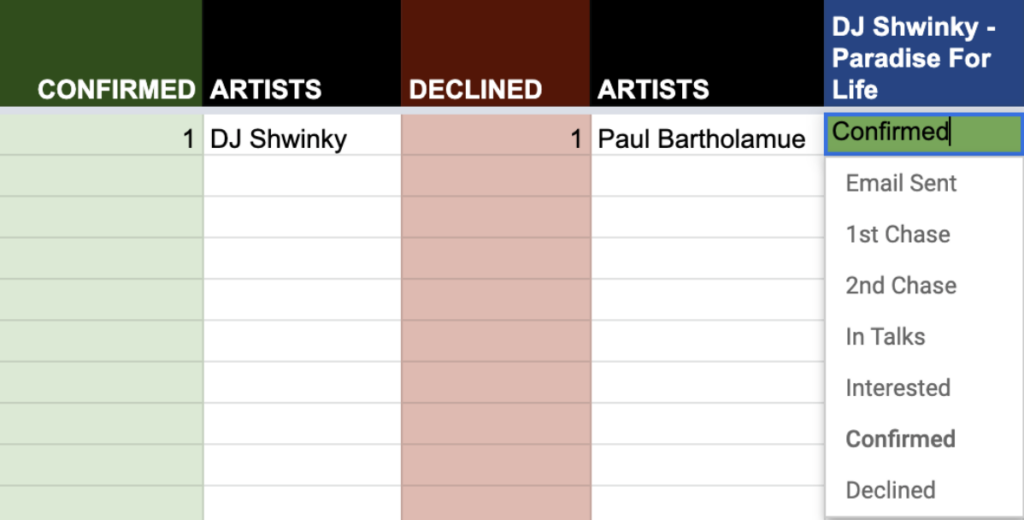By Mike Kelly.
When entering into the music industry as an artist or label, one of the things that can often seem overwhelming is the cost of PR or promo campaigns for your upcoming releases, and knowing who to send your music to for a possible feature, review or an addition to a curators or DJ’s playlist on Spotify, Youtube or radio.
One of the best ways to reduce the long term cost of your label, increase your international music industry relationships and get your head around who does what in the industry is to develop and maintain your very own Media & Radio Database. This is usually a spreadsheet created within Microsoft Excel, Google Sheets or Apple’s Numbers and will be an HQ for all of your industry connections from music journalists, bogs, publications, Spotify playlist curators to the hottest radio DJs you’ve managed to connect with or would potentially like to in the future.
These lists can be as complicated or simple as you’d like, so let’s run through a few of the basics to help get you on the way to developing your first media & radio database.
The first thing to recognize is that most of these databases are organised by a few very straight forward columns, as can be seen below. We used Google Sheets in the below examples but the same applies to Microsoft Excel and Apple Pages.

- Publication – This is where you’d add the publication, blog, website, radio stations etc. name and hyperlink the name to the website of the publication in question
- Email – Pretty straightforward, add the email address of the contact at that publication, radio station etc.
- First Name
- Last Name
- Position – Position is important to identify what job the person at the publication or radio station you’re approaching has. Best to only have contacts who actively accept submissions such as music journalists and writers, curators, radio dj’s and show producers and exclude the CEO of the company or the IT Technician, as these people will be unable to help you land features or interviews with your desired publications.
- Country – Another important column as it’s vital to know the region of the publications/radio stations you’re approaching for language reasons but also to hit up publications and radio stations in the same region as the artists you’re looking for more coverage for, oir if they have a tour in a certain region.
- Genre – Another important column to ensure you don’t send your latest Death Metal song to a Pop radio station or magazine, which would not yield great results.
- Notes – Any important information about what the publication in question accepts, do they do interviews, do you have to pay for features, if so how much? And any other information that could be useful for you to know when hitting them up again.
- C. F. – This is a space for Contact Forms, which are common among some of publications that don’t display any email addresses, so this is sometimes the only way to get through to them.
- Last Contact Date – This is also important to highlight when last did you speak to them and if there is no date there, you can track if you have ever hit them up.
Another important section to add to the end of the spreadsheet is a way to track if publications and radio stations that did decide to feature your latest release or if they declined, in which case you can start to develop a feel for what sort of music certain publications and stations enjoy and feature often.

Take a look at the example below that is what a filled in version of the above section can look like but in the end it’s up to you.

A few of the options that you can use to track at what stage of the PR campaign you’re at can be added to the releases column that you’re working with, as can be seen below in a drop down menu list.

At the end of the day, developing your own database can help you track and grow your music industry network across multiple fields and develop relationships with key industry journalists, writers, DJ’s, presenters and producers across the board. This will help you to get your music into the right place and tap into the fanbase of publications and stations with a potentially far greater reach.


